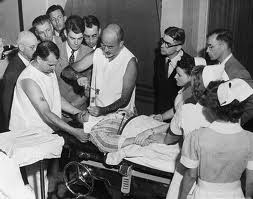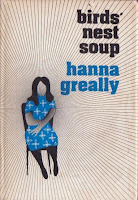Behind the Walls – the history of Ireland’s psychiatric hospitals
Monday night saw the airing of the first part of RTE's new documentary 'Behind the Walls', which explores the history of Ireland's psychiatric hospitals during the nineteenth and twentieth centuries.
 |
| The former Connaught Asylum, founded 1833 |
One of the key questions explored in the first episode was why Ireland had the highest per-capita rate of population in psychiatric hospitals in Europe in the mid-twentieth century, with numbers peaking at over 20,000. It looks at the social and economic factors, unique to Ireland, which help to understand this phenomenon.
The episode also traced the development of treatments for psychiatric patients from moral management, pioneered by the Tuke family at The York Retreat, and brought to Ireland in the mid-nineteenth century, to some of the more horrific treatments of the early and mid twentieth century. These included insulin coma therapy, electroconvulsive therapy and lobotomy. The documentary includes footage of Walter Freeman, one of the pioneers of lobotomy, carrying out a transorbital lobotomy.
 |
| Freeman performing a labotomy |

As well as looking at the history and treatments, the documentary also explores the, often silent, voice of the patient through the writings of Hanna Greally. Greally was training to be a nurse in London in the 1940s. She returned to Ireland suffering from shock as a result of the Blitz. Admitted to her local psychiatric hospital for 'a rest', she spent the next 18 years incarcerated and, as her writings shows, suffered horrifically as the result of the treatment in Irish psychiatric hospitals at the time. Following her release Hanna Greally published an account of her experiences,
Bird's Nest Soup, followed by the posthumous
Flown the Nest.
Behind the Walls continues next Monday on RTE1, with the second episode looking in more depth at the experiences of those in Irish psychiatric hospitals in the twentieth century. If you missed the first episode you can catch up now on
RTE Player.